This post was written by Graziela Castello, Coordinator of Sectoral Studies and Qualitative Methods at the Regional Center for Studies on the Development of the Information Society (Cetic.br).
In April 2024, the Regional Center for Studies on the Development of the Informational Society (Cetic.br), a department of the Brazilian Network Informational Center (Nic.br), published ‘Meaningful Connectivity: Measurement proposals and the portrait of the population in Brazil’. The report offers insights into how we can measure meaningful connectivity. It includes the International Telecommunication Union’s (ITU) proposed indicators on universal and meaningful connectivity, a chapter by Sonia Jorge and Onica N. Makwakwa from the Global Digital Inclusion Partnership (GDIP) outlining guidelines for measurement and policy development on the subject, and a final chapter by Fernando Rojas, from the United Nations Economic Commission for Latin America and Caribbean (ECLAC), sharing regional experiences of meaningful connectivity in Latin America.
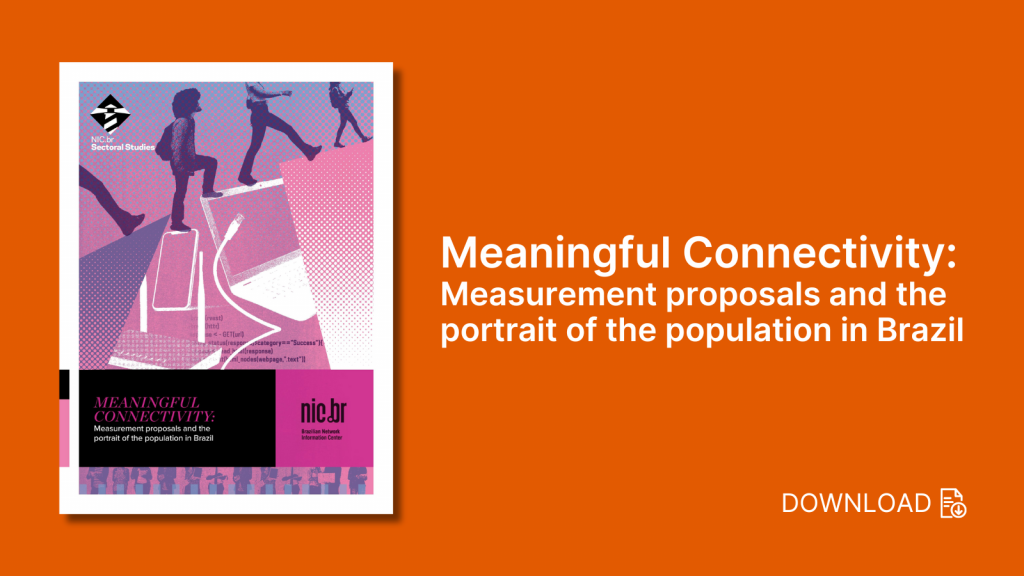
The publication also presents a study conducted by Cetic.br | NIC.br to portray the current situation of the Brazilian population through the lens of meaningful connectivity. This article will present some key elements of the study to emphasize the benefits of a multidimensional individual perspective for measurement.
The study aimed to present an initial portrait of Brazil in terms of meaningful connectivity based on the reprocessing of quantitative indicators from the survey on the use of information and communication technologies (ICT) among households. The survey is renowned as the most comprehensive household sample survey specializing in digital technologies in Brazil. It adheres to international methodological standards, produces comparable data and has been conducted annually, without interruption, for the past 19 years.
The survey provides indicators for both individuals and households, enabling various controlled analytical approaches through its microdata sets. Furthermore, as this is a survey based on international methodological frameworks and with a long historical series, it is possible to analyze the indicators retrospectively to gauge the country’s potential progress to date while simultaneously ensuring the ongoing monitoring of these issues into the future.
Moreover, the ICT households survey microdata ensures a more precise understanding of the individuals’ situation across their social, economic, and territorial diversity, allowing a deeper understanding of the phenomenon based on analyses that combine population access types with their internet uses and activities.
According to the 2023 ICT households survey, 84% of Brazilians aged ten and above are internet users, with nearly all of them (95%) using the internet daily. While this suggests that the country is well-connected, the question remains: do all people have the right conditions for meaningful connectivity? This question guided the investigation into the current state of meaningful connectivity in Brazil.
Based on existing literature and the propositions for measuring meaningful connectivity from the Alliance for Affordable Internet (A4AI) and the ITU, data from the Brazilian ICT household survey were analyzed to develop the study. From this analysis, an analytical and conceptual framework was developed.

Nine indicators across four dimensions were identified to assess the levels of meaningful connectivity among Brazilians. These dimensions, termed critical enabling factors for meaningful connectivity, are as follows:
1. Affordability: Examines the cost of staying connected.
2. Access to Equipment: Assesses whether individuals have the appropriate devices for their needs.
3. Quality of Connections: Evaluates the reliability and speed of internet connections.
4. Connectivity Environment: Looks at internet usage frequency and locations.
The nine indicators, derived from these four dimensions, generated a scale from zero to nine. Each individual in the ICT household survey received a score on this scale, ranging from having none of the indicators (score 0) to having all nine indicators (score 9). The scale was then divided into four categories: (1) score 0 to 2 – those who had the worst connectivity conditions; (2) score 3 to 4 – those with median-low connectivity conditions; (3) score 5 to 6 – those with median-high connectivity conditions; and (4) score 7 to 9 – those understood as meaningfully connected, who had at least seven from the nine conditions measured. This categorization provides a structured framework to evaluate and address the various levels of meaningful connectivity across the country.
From this categorization, the study showed that, in 2023, just 22% of Brazilians were considered meaningfully connected — scoring between 7 and 9 points. Unfortunately, the largest group observed performed poorly, with scores up to 2 points, representing a third (33%) of the population. This presented a more challenging scenario than when solely considering the 84% of internet users.
In addition to these enabling factors, the analysis also explored connectivity gaps by examining data across territorial, sociodemographic, and socioeconomic dimensions. This comprehensive approach provides a nuanced understanding of the quality of internet access in Brazil, particularly revealing hidden gaps in connectivity.
The two graphs below present some results for sociodemographic, economic, and territorial dimensions that highlighted inequalities hidden or underestimated when considering connectivity solely by internet access. Some key results include:
- Hidden gender gaps: According to the ICT households 2023 survey, 83% of males and 86% of females in Brazil were internet users. At first glance, it might seem that females are better positioned than males. However, a closer look at meaningful connectivity reveals a significant gender gap: 28% of males have meaningful connectivity compared to only 17% of females. The poorer connectivity conditions among females worsen existing barriers to their productive inclusion, income equality, public presence, and participation in social, political, and economic life.
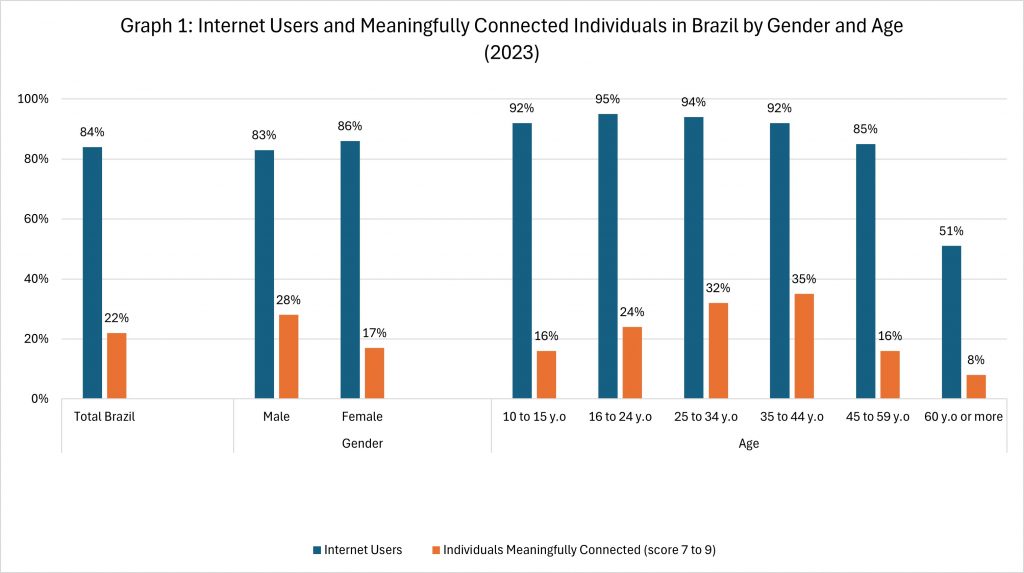
- Age is a barrier to connectivity, not just for older people: Age has historically been a barrier to digital inclusion, even in economically developed countries. This is also true in Brazil. In 2023, only 51% of Brazilian residents aged 60 and over were internet users, compared to 84% of the overall population. However, a different trend emerges when examining meaningful connectivity across various age groups. Unlike general internet usage, where younger people are the majority, only 16% of those aged 10 to 15 and 24% of those aged 16 to 24 have meaningful connectivity. This highlights a significant issue: while older individuals face greater exclusion, a large proportion of young Brazilians also experience poor connectivity. This puts them at numerous disadvantages in both their personal and professional development.
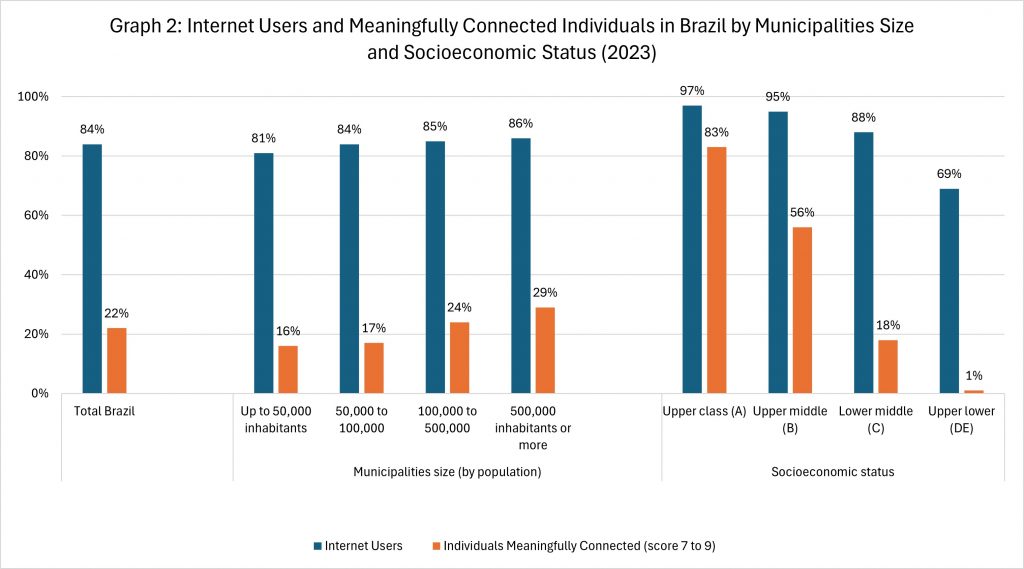
- Infrastructure gaps remain in the regions: Differences in simple internet access based on the population size of municipalities are minimal. In municipalities with up to 50,000 residents, 81% of the population are internet users, compared to 86% in municipalities with over 500,000 residents. However, when it comes to meaningful connectivity, there is a direct correlation: the larger the municipality, the higher the proportion of individuals meaningfully connected.
- Economic gap is much more challenging: There are significant differences in internet usage between economically advantaged and disadvantaged groups in Brazil. While 97% of the wealthiest Brazilians use the internet, only 69% of the low-income do. The gap is even more pronounced when considering meaningful connectivity: 83% of the former have meaningful connectivity, compared to just 1% of the latter. This extreme inequality directly impacts the opportunities available to different segments of society in the virtual environment, further disadvantaging those already vulnerable.
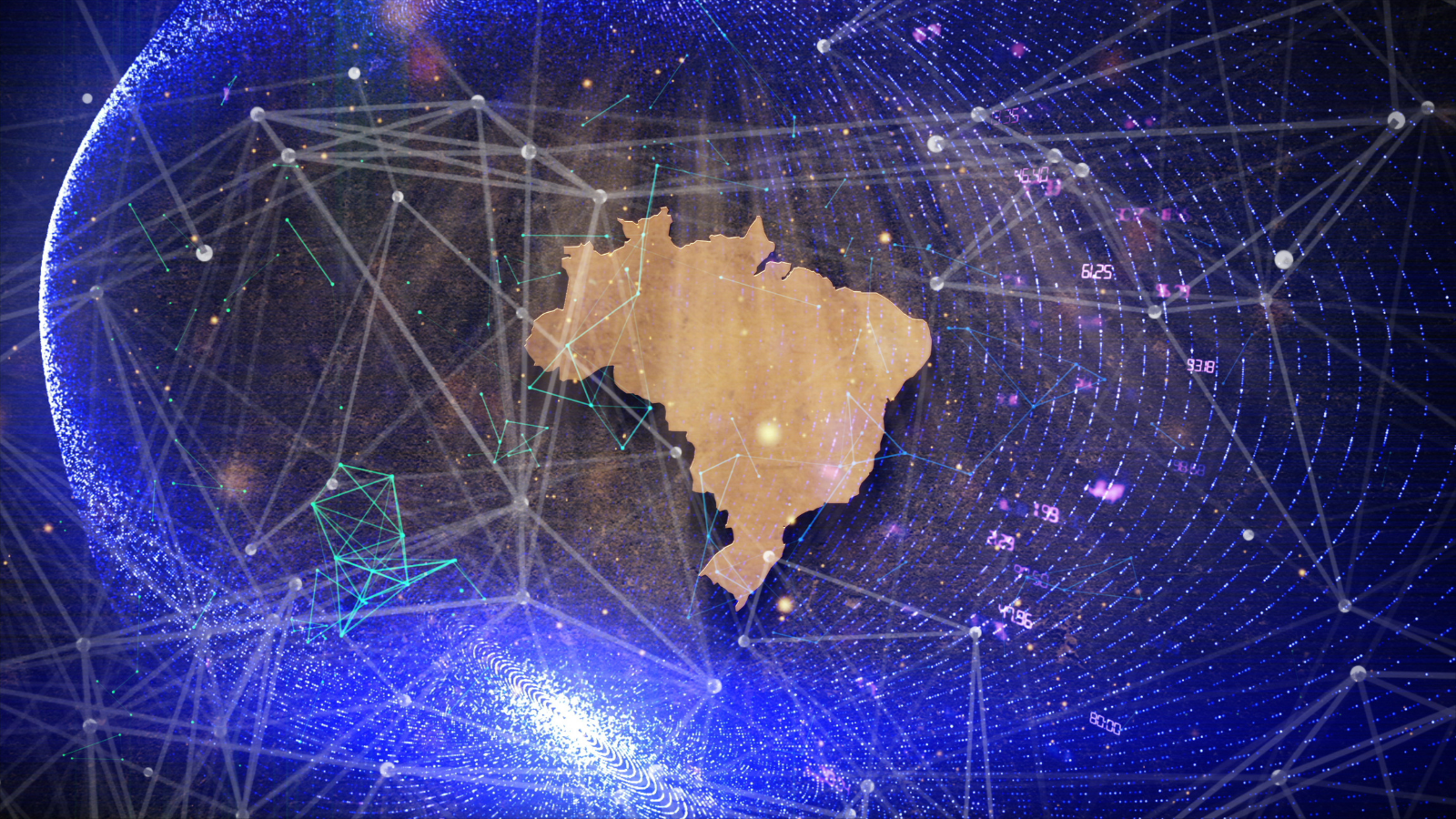
The study included an additional layer of analysis exploring the association between levels of meaningful connectivity and the quality and type of internet usage, including digital skills and online activities. The results showed a direct correlation between an individual’s level of meaningful connectivity and digital skills. Higher levels of meaningful connectivity were linked to better technical skills — such as attaching a file to a message — and skills for using the internet safely and reliably. These skills included browsing safety, privacy protection, and verifying information online.
The graph below shows that more people possess the assessed digital skills as meaningful connectivity levels increase. The findings reveal that those with the most fragile access conditions also have the fewest skills needed to mitigate internet usage risks and take advantage of online opportunities.
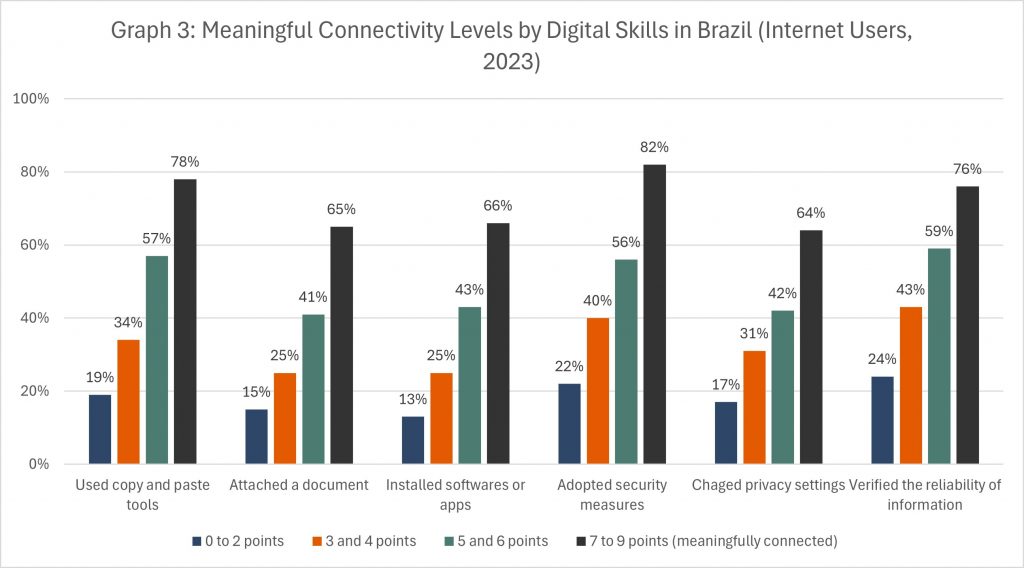
In addition to offering valuable clues about the existing gaps, we hope that the study will also guide the formulation and evaluation of policies and initiatives aimed at ensuring that all segments of society can fully enjoy the benefits provided by the digital age, with continued progress towards truly inclusive and meaningful connectivity.
Recognizing connectivity as a right is an essential milestone in the society’s digital transformation. Ensuring that everyone, regardless of socioeconomic background or geographical location, has access to meaningful connectivity is not just a step forward but an imperative for digital inclusion that goes beyond mere access. This principle is the foundation for building a connected society where the opportunities generated by the digital age are distributed fairly, fostering progress and innovation in all spheres of human and social life.
This is the third post in a series of GDIP blogs about Closing the Digital Possibilities Divide. To read more findings and explore the data, please see Chapter 3 of Meaningful Connectivity: Measurement proposals and the portrait of the population in Brazil / Edited by Cetic/NIC.br, São Paulo, 2024.
About Cetic.br
Since 2005, the mission of the Regional Center for Studies on the Development of the Information Society (Cetic.br), a department of the Brazilian Network Information Center (NIC.br), linked to the Brazilian Internet Steering Committee (CGI.br), has been to monitor access to and use and appropriation of information and communication technologies in Brazil. It fulfills this objective by producing indicators on ICT access, use, and appropriation in various segments of society. This data serves as input for policymaking and monitoring of public policies that contribute to Internet development in the country. In 2012, Cetic.br | NIC.br was approved as a UNESCO Category 2 Centre with the mission of monitoring the development of knowledge and information societies in Latin America and the Portuguese-speaking countries of Africa.
About GDIP
The Global Digital Inclusion Partnership is a coalition of public, private, and civil society organizations working to bring internet connectivity to the global majority and ensure everyone is meaningfully connected by 2030. GDIP advances digital opportunities to empower and support people’s lives and agency, leading to inclusive digital societies.

